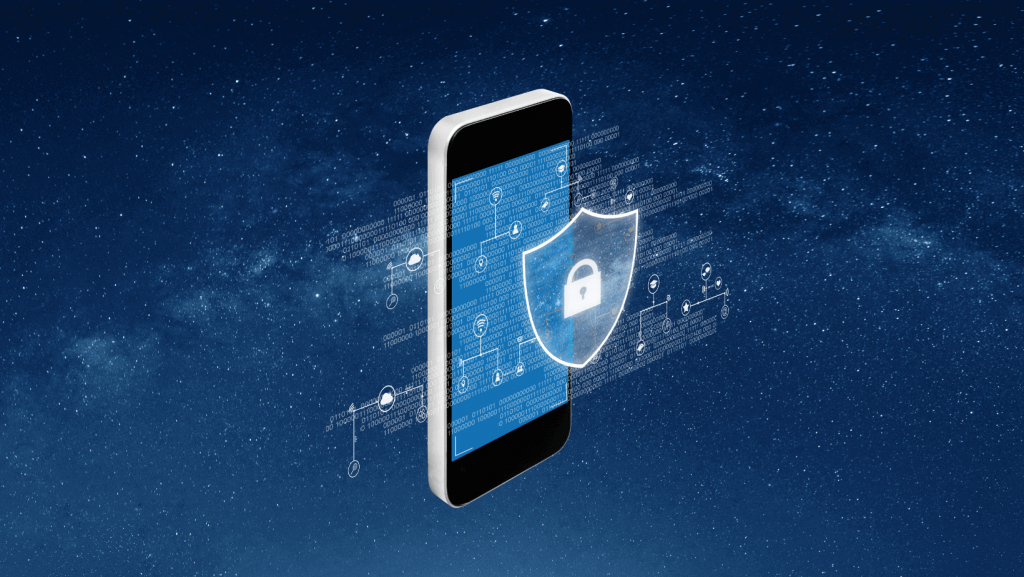In an era where mobile devices have become an integral part of our lives, ensuring their security has never been more critical. The increasing reliance on smartphones and tablets for communication, productivity, and financial transactions has made them enticing targets for cybercriminals. To protect our data and privacy, it is imperative to understand the evolving landscape of mobile device security threats and implement proactive measures to fortify our digital defences.
The Growing Importance of Mobile Device Security: Mobile devices have become an indispensable tool for individuals and businesses alike, providing convenience and connectivity on the go. However, this growing dependence comes hand in hand with an alarming rise in security threats specifically aimed at exploiting vulnerabilities in mobile devices. From sophisticated malware and targeted phishing attacks to network vulnerabilities, the consequences of mobile security breaches can be severe. Data breaches can result in identity theft, financial loss, reputational damage, and even legal consequences. As such, taking proactive steps to secure our mobile devices is no longer optional but a necessity.
Implementing Strong Passwords and Biometric Authentication: One of the fundamental pillars of mobile device security is establishing robust authentication practices. Creating strong, unique passwords that combine alphanumeric characters and symbols is crucial. Additionally, leveraging biometric authentication methods, such as fingerprint or facial recognition, adds an extra layer of security. By utilising these advanced authentication technologies, users can ensure that unauthorised access to their devices and sensitive information is mitigated.
Keeping Software and Apps Up to Date: Regularly updating the operating system and applications on mobile devices is a vital aspect of mobile security. Software updates often include critical security patches that address known vulnerabilities and reinforce device security. By promptly applying these updates, users can protect their devices from emerging threats and reduce the risk of exploitation.
Utilising Mobile Device Management (MDM) Solutions: For organisations and businesses, deploying Mobile Device Management (MDM) solutions is paramount to enforcing security policies, remotely managing devices, and safeguarding sensitive data. MDM solutions provide centralised control over devices, enabling administrators to implement security measures, track devices, and even wipe data remotely in case of loss or theft. This level of control and oversight ensures that corporate data remains protected and compliant with security standards.
Enabling Find My Device and Remote Wipe: The ability to locate a lost or stolen device and protect sensitive data remotely is crucial in the event of device theft or misplacement. Enabling features such as “Find My Device” provides users with a means to track their devices’ location using GPS technology. In more severe cases, where device recovery is not feasible, the option to remotely wipe the device ensures that confidential information does not fall into the wrong hands.
Maintaining Vigilance on Public Wi-Fi Networks: Public Wi-Fi networks, while convenient, pose significant risks to mobile device security. Hackers often exploit unsecured networks to intercept data transmitted between devices and servers. To mitigate this risk, users should exercise caution when connecting to public Wi-Fi networks, avoid transmitting sensitive information, and consider using virtual private networks (VPNs) to establish encrypted connections and protect their data from prying eyes.
Exercising Caution with Links and Downloads: Cybercriminals frequently employ deceptive tactics, such as phishing, to trick users into divulging sensitive information or downloading malicious apps. It is crucial to remain vigilant and avoid clicking on suspicious links or downloading apps from untrusted sources. Users should rely on reputable app stores and implement security measures, such as app reputation systems, to minimise the risk of inadvertently installing malicious software.
Encrypting Your Data: Data encryption acts as a powerful safeguard against unauthorised access to sensitive information stored on mobile devices. By encrypting data, even if the device is compromised, the encrypted content remains unreadable and unusable to unauthorised individuals. Leveraging built-in encryption features or utilising trusted third-party encryption apps can provide an added layer of protection for confidential data.
Regularly Backing Up Your Data: Creating regular backups of mobile device data is a crucial practise to mitigate the potential impact of data loss or device theft. Backing up data to secure cloud storage or local backup solutions ensures that, in the event of an unfortunate incident, users can quickly restore their data to a new device, reducing the disruption caused by data loss.
Staying Informed and Educated: Mobile device security is an ever-evolving landscape, with new threats and vulnerabilities emerging constantly. It is essential to stay informed about the latest security practices and emerging threats. Following trusted cybersecurity sources, participating in security awareness programs, and staying updated on best practices enable users to make informed decisions regarding their mobile device security.
Securing our mobile devices has become paramount in an interconnected world where our data and privacy are constantly at risk. By implementing strong authentication practises, keeping software up-to-date, utilising management solutions, and adopting cautious behaviours, we can fortify our devices and protect our valuable data. The key lies in staying informed, practising vigilance, and taking proactive measures to ensure the security of our mobile devices on the go.









